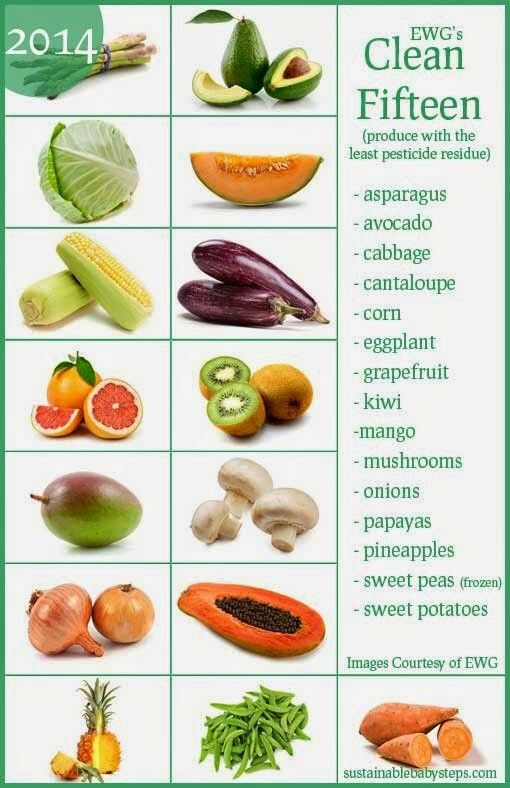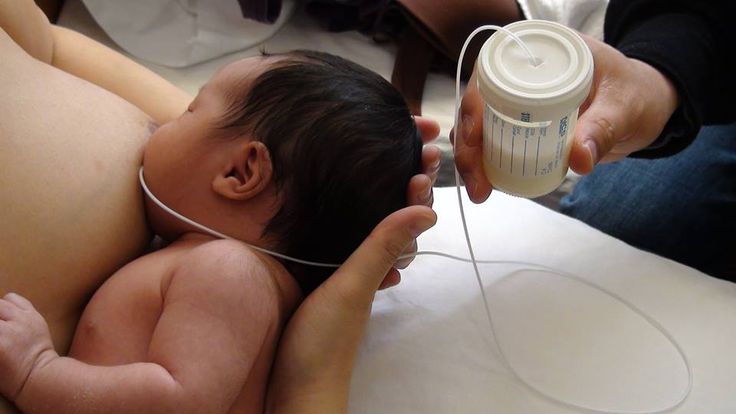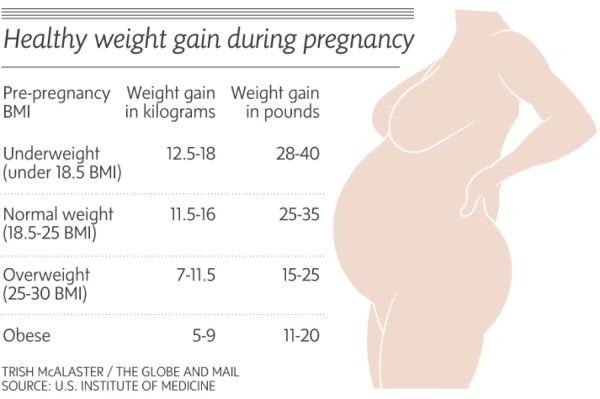Avocado and papaya baby food
Tasty Avocado Baby Food Combinations
These simple avocado baby food recipes are lip-smacking good
By Sarah Prager
Avocado baby food offers a nutritious first step in solid foods for babies. To begin with, avocados contain 20 vitamins and minerals, including folate, potassium, iron, zinc, and vitamins A, C, E, and K, plus several variants of vitamin B. In addition, avocados are packed with protein, fiber, and healthy fats without no cholesterol or sodium. Avocados are very low in saturated fat, too. Babies need omega-3 fatty acids to promote brain and eye development, and avocados are one of the fattiest plant foods that are a great source of oleic acid, an important omega-3 that’s also found in olive oil.
Contents
- Easy, fun-flavored yummy avocado/fruit puree
- Super nutritious, avocado/green vegetable puree
- Crispy, easy-to-grab coated avocado slices
- Vitamin-packed avocado/banana smoothie
- Avocado baby food and sweet potato puree
- Delicious avocado blueberry muffins
- Protein Power avocado/egg puree
- How early can avocados be introduced to baby?
Conveniently, avocados are also soft and easy for babies to gum and swallow. They’re simple for busy parents and caregivers to mash with a fork or puree in a food processor. Plus, avocados are easy to combine with other healthy foods for simple baby foods. So, which avocado baby foods should you make at home? Here are seven simple recipe ideas for your little one to enjoy that are a snap to make.
Easy, fun-flavored yummy avocado/fruit puree
For a quick avocado baby food meal, puree avocado in a food processor or small blender with a sweet fruit, and your baby will gobble it up. Here are some fruits that make a tasty combination with avocado:
- Banana
- Apple
- Pear
- Kiwi
- Pineapple
- Strawberry
With these purees, as with any baby food purees, you can add water, breast milk, or formula to change the consistency. Avocados are rather firm and will make a whipped consistency, but if you add liquid, the puree will thin out. The thinner the consistency, the easier the puree is for a baby to swallow. There isn’t any need to cook avocados, but with harder fruits like apples, you may want to steam them first before pureeing.
There isn’t any need to cook avocados, but with harder fruits like apples, you may want to steam them first before pureeing.
You can also alternate the amounts of each ingredient as needed. You can add one whole avocado in with half an apple of steamed slices with a little water, or you could throw in one to 10 strawberries, depending on what you find your baby prefers. The avocado to fruit ratio is totally up to you and dependent on what baby likes.
Super nutritious, avocado/green vegetable puree
Go green with this tasty and healthy avocado/veggie puree. These vegetables make nutritious and delicious combo purees with avocado:
- Peas
- Broccoli
- Kale
- Spinach
- Asparagus
Just like the fruit purees, you can add liquid to change the consistency and play with the ratio to find the combination your baby likes best.
Crispy, easy-to-grab coated avocado slices
If you’ve ever tried serving your baby raw avocado, you know it’s very slippery.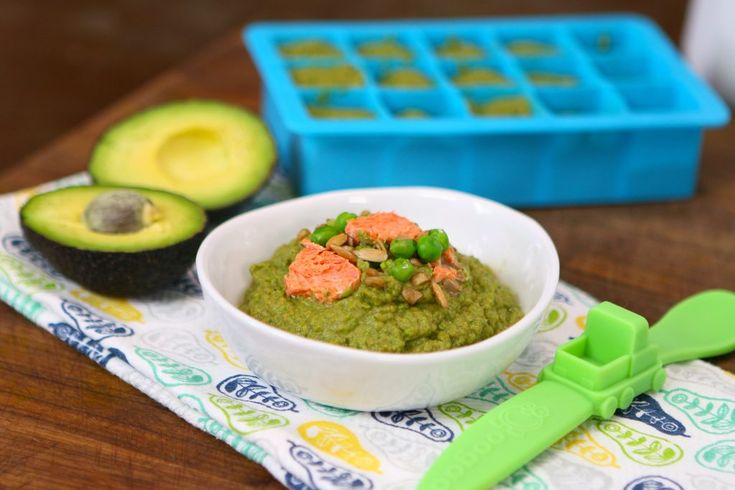 However, cutting the avocado into slices allows babies to grasp and feed themselves, helping to develop fine motor skills. Moreover, you can coat the slices in a breadcrumb mixture made of crumbled baby crackers, puffs, or wafers to make the slices easier to hold. It also makes good use of the dust at the bottom of the puffs container.
However, cutting the avocado into slices allows babies to grasp and feed themselves, helping to develop fine motor skills. Moreover, you can coat the slices in a breadcrumb mixture made of crumbled baby crackers, puffs, or wafers to make the slices easier to hold. It also makes good use of the dust at the bottom of the puffs container.
Vitamin-packed avocado/banana smoothie
Of course, you can DIY any smoothie recipe, but here are a few avocado combos perfect for a nutritious smoothie for baby:
- Avocado, banana, spinach, and yogurt
- Avocado, banana, blueberries, and baby oatmeal
- Avocado, banana, mango, and peach
- Avocado, banana, and strawberries
Mix and match all you want to find that perfect avocado/banana smoothie your baby loves. Pop it all in the blender with your choice of liquid (water, breast milk, or formula) and you’re done! You can add flax or chia seeds to any of these recipes for extra nutrition or maple syrup for a touch of sweetness.
Avocado baby food and sweet potato puree
Sweet potatoes are cheap, naturally sweet on the little one’s taste buds, and easy to cook and puree. After you cook two cups of diced sweet potatoes, mix them with the pulp of one avocado in a blender. Then, add one cup of water at a time, until you get the thickness of the puree you’re looking for.
Delicious avocado blueberry muffins
If you’re ready to get more complex, go all out by baking avocados into muffins using this recipe. You’ll get 36 mini muffins that store in a Tupperware container on the counter for a week. This one is best for older babies who can chew beyond purees. They’re great for toddlers too.
Protein Power avocado/egg puree
For this nutrition powerhouse meal, add a hard-boiled egg (never serve raw or undercooked egg to a baby) to a half of an avocado with a tablespoon of water (or breast milk or formula) and blend. For even better consistency, add only the hard-boiled yolk to the mixture and set the hard-boiled whites aside for another recipe.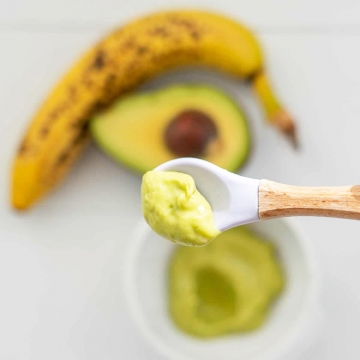
How early can avocados be introduced to baby?
You can give your baby their first taste of avocado right around the six-month milestone. It’s around the same time that you’ll be introducing fruits, vegetables, and solid foods other than rice cereal.
Feeding a baby raw, mashed avocado is certainly a good introductory food, but with these combinations, you’ll be enhancing the flavors and increasing the nutrition, all while helping to avoid a picky eater by giving a diversity of tastes in each meal. An avocado can freeze for up to a month before losing its nutritional value and taste, so store the extra puree in ice cube trays and defrost as needed. Since avocados can turn brown so quickly, freeze them right away if you’re not going to serve them immediately. Don’t forget to sneak yourself a taste while you’re cooking. Avocados are a healthy pick for adults too.
Editors' Recommendations
- Tasty St. Patrick’s Day recipes to bring the tradition to the family’s dinner plate
- Make these easy Super Bowl snacks the whole family will love
- These 9 easy no-bake recipes for kids are perfect for independent bakers
- How to soothe a baby crying in their sleep and get your rest as well
- 9 healthy air fryer recipes that will replace fast food and takeout
11 Tasty And Easy-To-Make Avocado Baby Food Recipes
Nutritious avocado preparations make it easier to include the fruit in your baby's balanced diet.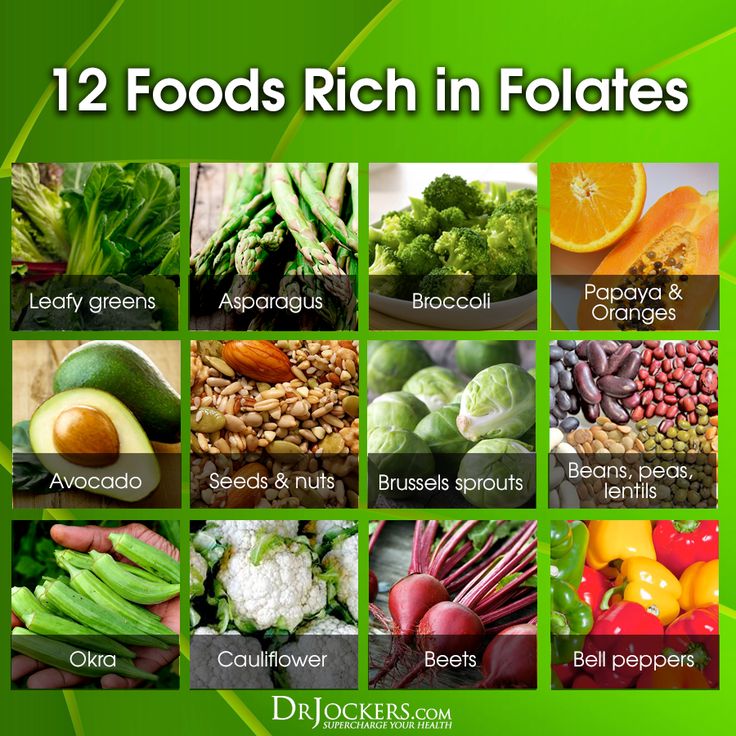
Research-backed
MomJunction believes in providing reliable, research-backed information to you. As per our strong editorial policy requirements, we base our health articles on references (citations) taken from authority sites, international journals, and research studies. However, if you find any incongruencies, feel free to write to us.
Avocado is frequently used in baby foods because of its creaminess and easy-to-process pulp. Additionally, you may wish to introduce several avocado baby food recipes because they are high in essential nutrients, such as vitamins and minerals, and a balanced quantity of fats, all of which are important for a growing infant.
Many parents wonder whether avocado can be given as the first food to a baby who has just started eating solids. This article discusses various aspects of avocado for babies and provides the finest avocado-based baby food recipes.
When Can Babies Have Avocado?
Introduction to solids usually starts at six months of age and avocado can be the first food for your baby (1). While the creamy texture comes from fat, it is a “good” fat, and is vital for the baby’s growth. Avocados are also packed with several other vital nutritious ingredients, thus making it a superfood for babies.
While the creamy texture comes from fat, it is a “good” fat, and is vital for the baby’s growth. Avocados are also packed with several other vital nutritious ingredients, thus making it a superfood for babies.
Related: 7-Month-Old Baby's Food: Solids, Food Chart And Recipes
Health Benefits Of Avocado For Babies
Your baby reaps the following health benefits when he eats avocado:
- Keeps the nervous system healthy: Avocado contains more folic acid (also called folateiXB vitamin vital for blood cells formation or vitamin B9) than many other fruits. Folic acid is essential for the healthy development of the nervous system. It also plays a vital role in brain development and boosting cognitive abilities. Regular consumption of avocado can act as a nervous system tonic for your little one (2).
- Provides good fat for growth: The fat found in avocados consists of monounsaturatediXA type of dietary fat fatty acids, which help in the growth and development of the body.
 This means you can feed your baby an avocado every day without worrying about them becoming overweight (3).
This means you can feed your baby an avocado every day without worrying about them becoming overweight (3).
Related: Are Fat Babies Healthy And When Is It A Concern?
- Good for gross motor skills: An avocado has more potassium than a banana (4). A healthy intake of potassium is essential for proper functioning of the skeletal muscles (5). The health of the skeletal muscles, in turn, determines the progress of the gross motor skills.
- Boosts immunity: Avocados contain several micronutrients and vitamins. The fruit is rich in vitamin B6 that is vital for maintaining healthy immunity, which in turn protects the infant from a host of illnesses (6) (7).
- Improves eye health: Avocado is rich in antioxidants luteiniXAn oxygenated carotenoid present in vegetables and fruits and zeaxanthin that accumulate in the eyes and improve vision.
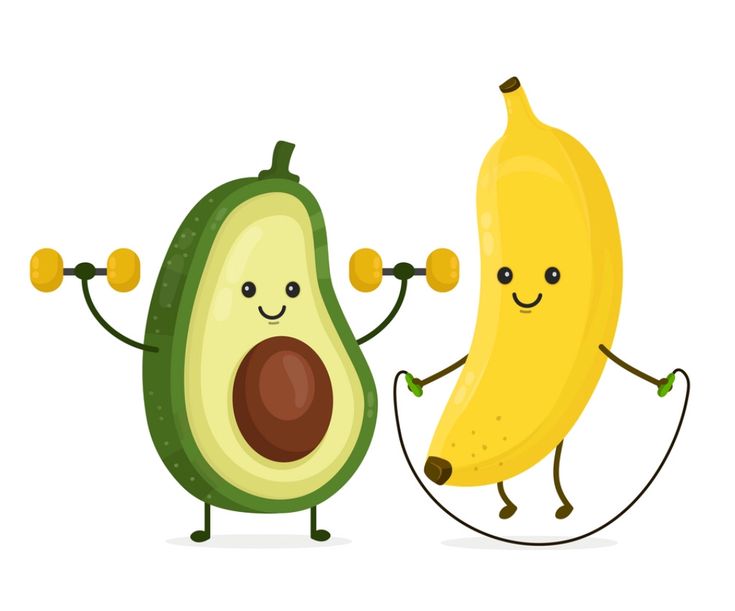 These antioxidants also help protect the eyes from degenerative effects of the ultraviolet rays from sunlight (8).
These antioxidants also help protect the eyes from degenerative effects of the ultraviolet rays from sunlight (8).
Related: When Can Babies See Clearly And Their Vision Development
Nutritional Value Per 100g Of Avocado
| Nutrient | Unit value per 100g |
|---|---|
| Energy | 160kcal |
| Carbohydrates | 8.53g |
| Natural sugars | 0.66g |
| Fiber | 6.7g |
| Protein | 2g |
| Fat | 14.66g |
| Calcium | 12mg |
| Iron | 0.55mg |
| Magnesium | 29mg |
| Phosphorus | 52mg |
| Potassium | 485mg |
| Sodium | 23mg |
| Manganese | 0.142mg |
| Copper | 0.19mg |
| Zinc | 0.64mg |
| Selenium | 0.4µg |
| Fluoride | 7µg |
| Vitamin C | 10mg |
| Vitamin B1 (Thiamin) | 0. 067mg 067mg |
| Vitamin B2 (RiboflaviniXA B vitamin found in plant and animal-based foods ) | 0.13mg |
| Vitamin B3 (Niacin) | 1.738mg |
| Vitamin B5 (Pantothenic acid) | 1.389mg |
| Vitamin B6 | 0.257mg |
| Vitamin B9 (Folate) | 81µg |
| CholineiXA vitamin B complex nutrient required for bodily functions | 14.2mg |
| Vitamin A | 7µg |
| Vitamin E | 2.07mg |
| Vitamin K | 21µg |
Source: United States Department of Agriculture (9)
Now, let’s look at some tips for cooking and storage of avocados.
How To Select And Store Avocados?
Selection: Avocados you buy in the market are often unripe. While it is okay for adults, babies will probably not like the slightly bitter taste of the unripe fruit.
- The best way to check if an avocado is ripe is to gently press it in the palm of your hand.
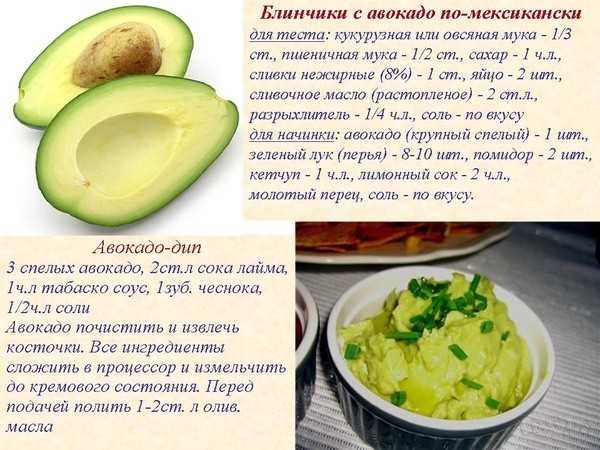 A ripe avocado will feel firm, but yield a bit to the pressure from the hand (10). An unripe avocado will feel palpably hard, and an overripe one will crack or burst open when pressed.
A ripe avocado will feel firm, but yield a bit to the pressure from the hand (10). An unripe avocado will feel palpably hard, and an overripe one will crack or burst open when pressed.
- Choose avocados that have a dark green skin and a rough and bumpy feel.
- Observe the pulp once you cut an avocado at home. The pulp of a ripe avocado is light green and gets yellowish-green around the skin of the fruit.
Storage: It is best to consume sliced avocados fresh since the pulp is rich in fat and could be susceptible to bacterial degeneration. Sliced avocado can be stored in the form of purees and mashes. To do this, slice the avocados and turn them into puree, pour the puree into an ice cube tray, and freeze it (11). Consume it within a couple of days by thawing the fruit before eating.
Quick tip
Sprinkle some fresh lemon juice on cut or pureed avocado, which you intend to store, to preserve the color and taste.
Fresh fruit should be your first option since even the frozen avocado puree can lead to loss of nutrients.
Selecting and storing avocados is easy. And, in the next section, we tell you how to cook avocados for your baby.
How To Process Avocados For Baby Food?
Avocados are best eaten raw. Just like bananas, you remove the peel of the avocado and eat the pulp. Boiling or direct heating can make oils in the avocado pulp taste unappealing (12). However, you can bake and grill an avocado. You can also process the raw pulp for baby food. Here are the different ways to process avocados to instill baby-friendly flavors:
- You can grill avocados either on a conventional charcoal grill or in an oven. Cut the avocado into two, remove the seed, and cut the fruit lengthwise into thin slices. Grill the slices for three minutes. If you intend to cook in an oven, then preheat the oven to 400ºF (200ºC). Place the avocado slices on an oven grill and grill for ten minutes.
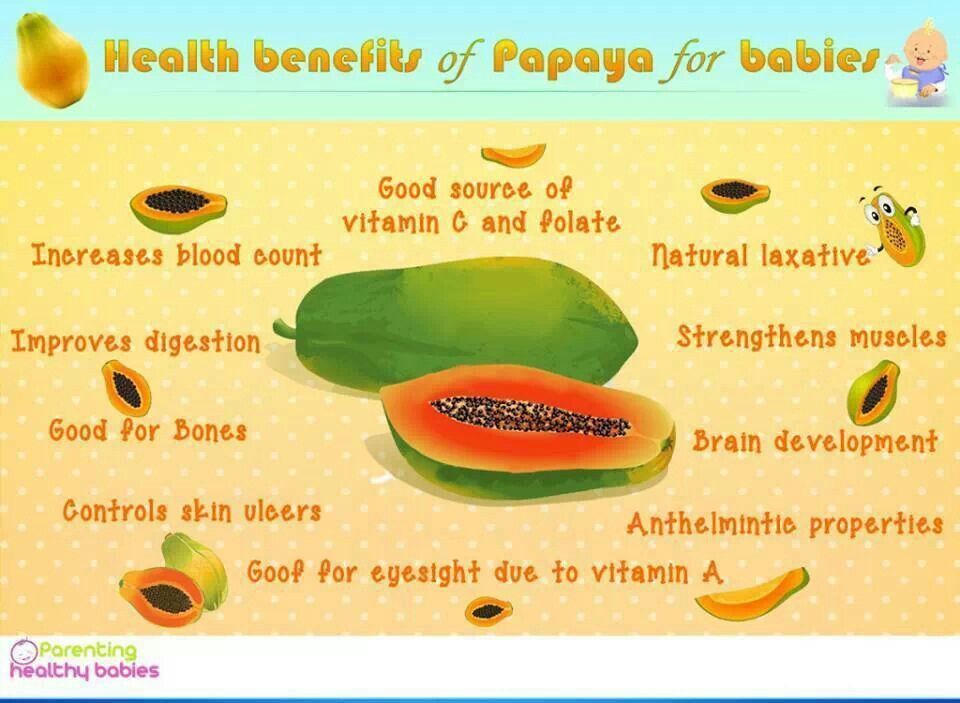
- To bake, cut the avocados the way you want – either slices or small chunks. Preheat the oven to 425ºF (218ºC). Bake the avocado for 20 minutes.
- Scoop out the pulp on a plate and use a fork to mash it. You can feed mashed pulp to the baby without any further processing.
- Pureeing the fruit is easy. Transfer the scooped pulp into a blender, add some water, and blend it till you attain a desired consistency.
- You can blend avocado with baby formula to add flavor to it.
Quick tip
You can use guacamole as a dip for toasted bread, whole wheat soft pita or to dunk steamed vegetables.
Now, let’s take a look at a few recipes that use the above techniques of cooking the fruit.
Amazing Avocado Baby Food Recipes
Avocado makes an excellent accompaniment to several food items, thanks to its creamy texture and taste. Various food combinations using avocados can help in offering different textures and introducing new flavors to the baby. Here we present 11 delicious homemade baby food recipes using avocado.
Various food combinations using avocados can help in offering different textures and introducing new flavors to the baby. Here we present 11 delicious homemade baby food recipes using avocado.
1. Pear and avocado puree
Image: Shutterstock
This easy-to-prepare fruit puree combines pear’s subtle sweetness with avocado pulp’s creamy texture to create a delicious combination.
You will need:
- 1 pear
- 1 avocado
- 1-2 cups water
How to:
- Slice out the avocado pulp. Chop the pear into smaller pieces.
- Transfer it to a blender. Add water, and blend.
- To thicken the puree add a bit more avocado pulp and to thin it, add some water.
2. Avocado and banana mash
Image: Shutterstock
The sweetness of banana meets the creaminess of avocado to make this fruity dessert for your little one.
You will need:
- 1 banana
- 1 avocado
How to:
- Put the avocado pulp and the banana in a bowl.
 Mash them together with a fork.
Mash them together with a fork. - Add some water if the mixture gets mushy, or you can also add some formula milk.
- Once the mashed fruits attain desired consistency, the dish is ready to be served.
3. Sweet potato and avocado puree
Image: Shutterstock
Sweet potato goes well with avocado to make a nutritional baby food that naturally tastes sweet.
You will need:
- 2 cups diced sweet potato
- 1 avocado
- 4 cups of water
How to:
- Transfer the sweet potatoes into a cooking vessel along with water. Boil the sweet potatoes for 25 minutes. You can also pressure cook them for four whistles.
- Sieve out the sweet potatoes from the water and let it cool. Transfer the pulp of the avocado into a blender and add a cup of water.
- Add the boiled sweet potatoes to the blender and blend them. Pour more water if required and combine till you achieve the desired consistency.

4. Mango and avocado puree
Image: Shutterstock
You can combine the delicious tropical fruit with avocado to either make a puree or smoothie.
You will need:
- 1 mango
- 1 avocado
- 1 cup water
How to:
- Peel the mango and scoop out the pulp into a blender. Add the avocado pulp as well.
- Add some water and blend them till desired consistency.
- You can also add formula milk instead of water to make it into an avocado mango smoothie.
5. Chicken and avocado puree
Image: Shutterstock
Combine the protein-rich chicken with the good fat of avocado to make an avocado meal for your baby.
You will need:
- 1 1/2 cups of boneless chicken pieces
- 1 avocado
- 4-5 cups of water
How to:
- Boil the chicken for 25 minutes on medium flame or pressure cook it for up to four whistles from the cooker.

- Let the chicken cool. Do not discard the stock (the chicken water).
- Scoop out the pulp of avocado into the blender. You can add the pulp directly or bake it in an oven at 425ºF (218ºC) for 20 minutes.
- Transfer the avocado and the chicken, with its stock, into a blender.
- Blend until the chicken and avocado have adequately mixed.
6. Carrot and avocado puree:
Image: iStock
Carrots are rich in vitamins thus making this combination of avocado and carrots an excellent multi-vitamin meal for an infant.
You will need:
- 1 cup diced carrots
- 1 avocado
- 3-4 cups of water
How to:
- Cook the carrots by boiling them in water for 20 minutes on a medium flame. You can also pressure cook it for three steam whistles.
- Cool the carrot with the stock.
- Transfer avocado pulp into a blender, add the carrots and the stock and blend till you achieve the desired consistency of the puree.
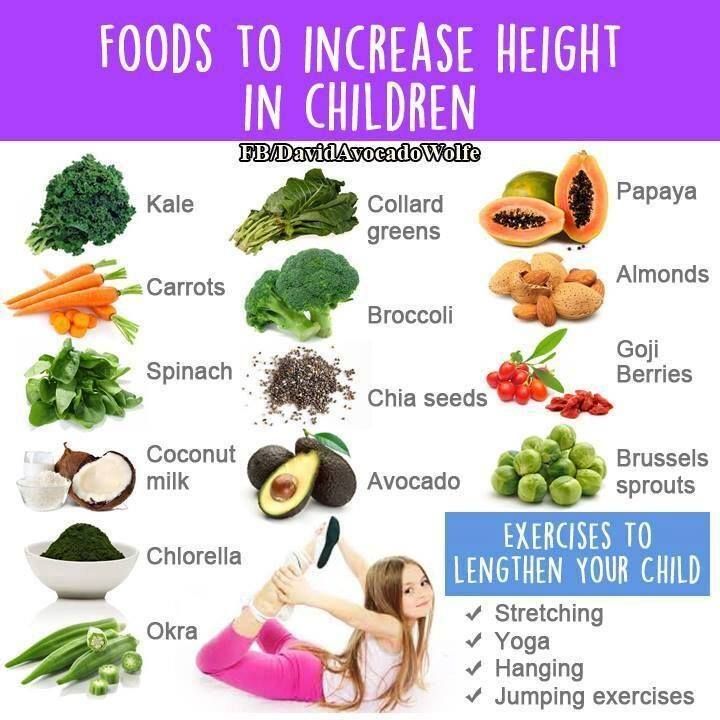
7. Peas and avocado mash
Image: Shutterstock
Mashed peas and avocado should surely be a green, delight packed with protein from peas and healthy fats from avocado.
You will need:
- 1 1/2 cups peas
- 1 avocado
- 2 cups of water
How to:
- Boil the peas for 25 minutes or pressure cook for up to three steam whistles.
- Sieve out the peas and let them cool. Do not discard the peas stock yet.
- Add the avocado pulp and the cooked peas in a bowl. Mash them together. If the mixture seems too thick, then add some peas stock to soften it.
8. Avocado and formula smoothie
Image: Shutterstock
If you love avocado smoothie yourself, then you can prepare some for your baby as well.
You will need:
- 1 medium-sized avocado
- 2-3 spoon formula
- 5-6 cups of water
How to:
- Slice the avocado into half, remove the seed, and use a spoon to scoop out the soft pulp.

- Transfer the pulp to a blender, add water, and formula to it. Do note that you can refer the back label of formula carton for the precise quantity of formula powder needed for a cup (236ml) of formula milk.
- Once you have all the ingredients in the blender, blend them. Pour into a cup and serve to the baby right away.
9. Apple and avocado puree
Image: Shutterstock
Apples go well with avocado and the two pack a lot of nourishment together for a healthy nutrition of your infant.
You will need:
- 1 apple
- 1 avocado
- 2-3 cups of water
How to:
- Chop the apple into smaller pieces and retain its skin since it contains a lot of nutrients.
- Transfer the apples to a cooking vessel with water to just submerge the apples. Cook for 25 minutes on medium flame.
- Let the apples cool along with the water.
- Add the avocado pulp into a blender and transfer the apple pieces with the water.

- Blend the avocados and apples finely together.
10. Avocado yogurt
Image: Shutterstock
A baby should not have cow’s milk before the age of 12 months, but it is okay to give yogurt. The American Academy of Pediatrics (AAP) states that processed dairy products such as yogurt can be introduced into a baby’s diet after six months and preferably in combination with a fruit or vegetable (13). It means you can combine avocado and yogurt to make a tasty digestion-friendly treat for your little one.
You will need:
- 1 1/2 cup whole cow’s milk yogurt (preferably homemade)
- 1 avocado
How to:
- Transfer yogurt to a blender and the avocado pulp to it.
- Blend till the avocado pulp entirely mixes with the yogurt.
- If the mixture seems thick, you can add a little water during the blending process.
11. Frozen avocado cubes
Image: Shutterstock
It makes an excellent avocado baby food for the hot summer months.
You will need:
- 3 avocados
- 4 cups of water
How to:
- Transfer the fruit pulp and water into a blender, and blend till it makes a very thick puree.
- Pour the puree into ice cube tray and freeze for an hour. The cubes must feel squishy and should not get too hard.
- Once ready, transfer to a plate and serve it to your toddler with another fruit such as with banana or you could even serve with yogurt.
In addition to the above recipes, you may feed avocado in combination with other fruits.
Quick tip
You can combine avocado, cottage cheese, vanilla yogurt, milk, and lemon zest to make avocado popsicles for babies.
Avocado Baby Food Combinations
You can combine avocado with the following foods to make the most delicious baby food recipes:
- Fruits with innately sweet pulp such as bananas and mango taste the best with avocados.
 You can combine other fruits of your choice since avocado tastes good with almost any fruit.
You can combine other fruits of your choice since avocado tastes good with almost any fruit.
- Make your baby’s formula interesting and flavorful with a dash of avocado.
- Yogurt will undoubtedly taste the best for an infant when combined with avocado.
- You can combine avocado with meat to bring that creamy texture to meat purees.
Avocado is a wonderful fruit that packs a lot of nourishment. But it might be unsuitable to some infants.
Can A Baby Be Allergic To Avocados?
Yes. Infants can be allergic to avocado, and skins hives (medically called urticariaiXA skin reaction characterized by itchy bumps ) is the most common symptom of avocado allergy. Other symptoms of avocado allergy are diarrhea, vomiting, nausea, swelling of the face, and drowsinessiXFeeling of sleepiness during the day .
If your infant is allergic to banana and melon, do not feed them avocado, as infants with allergies to these fruits are 90% likely to be allergic to avocado. If your baby has other allergies or allergic conditions such as asthma and eczemaiXA chronic, non-infectious skin ailment , then you can delay the introduction of avocados up to the age of nine months (14). Consult your pediatrician before introducing any new fruit into your baby’s diet and seek advice on using allergy-free recipes. In any case, be alert to the signs of avocado allergy in the baby.
If your baby has other allergies or allergic conditions such as asthma and eczemaiXA chronic, non-infectious skin ailment , then you can delay the introduction of avocados up to the age of nine months (14). Consult your pediatrician before introducing any new fruit into your baby’s diet and seek advice on using allergy-free recipes. In any case, be alert to the signs of avocado allergy in the baby.
You may have some more questions about the avocado fruit, and we address those queries in the section below.
1. Can my baby eat avocado every day?
Yes. Avocados can be a part of your baby’s daily diet. There is no limit to how much avocado he can eat. But, do not overfeed! Just make it a part of the regular diet.
2. Should I select organic avocados for my baby?
Yes, you can, but it is not always necessary. According to experts, avocados are among fruits that are least likely to be contaminated by pesticides and are mostly free of any harmful chemical residue (15). It means the avocado you pick at a supermarket is safe for your baby.
It means the avocado you pick at a supermarket is safe for your baby.
3. Can I use avocado oil for baby food?
Yes. However, feeding it to your baby in the fruit form is a better option. Avocado oil provides a fraction of nutritional benefits that a whole fruit does. Therefore, avocado fruit is healthier for your baby. You can still use avocado oil when shallow-frying vegetable pieces for your baby’s finger food. It is to be noted that the avocado oil is more expensive than other oils and buying fruit offers better value in terms of money and nutrition for your baby.
4. Does avocado cause gas in babies?
Yes, but only in small amounts. Every food produces gas in the gastrointestinal tract. It is only when the gas causes discomfort to an infant that the food becomes a concern. Pediatric experts state that avocado produces normal quantities of gas in the gastrointestinal tract of a baby. It means, it is tolerable and does not cause any problems to the infant (16).
5. Do avocados lead to constipation in infants?
Do avocados lead to constipation in infants?
There is no scientific evidence to prove that avocado can cause constipation. In fact, pediatric experts recommend avocado to treat constipation, as the fruit contains moderate level of fiber, which eases bowel movement (17).
6. Is avocado hard to digest for babies?
Avocados are not typically hard to digest. Instead, they are rich in soluble fiber, potassium, and enzymes, which are advantageous to the stomach and assist with digestion. Still, avoid its excessive intake in babies as its high fiber content may upset their tummies (18) (19).
7. Does avocado help a baby gain weight?
Avocado is a nutritious fruit that can provide babies with healthy fats. Its consumption with a well-balanced, healthy diet may help babies gain weight. However, the fruit alone is not known to promote weight gain in babies.
Avocado is rich in protein, calcium, magnesium, healthy fat, and other nutrients. It is a good choice for babies over six months. You may offer them avocados in baked, grilled, or pureed forms. Its creamy and soft texture also allows you to create delicious avocado baby food recipes such as avocado and banana mash or mango and avocado puree. So, if your baby is not allergic to avocados, feed them the fruit daily to keep their nervous system healthy, help develop gross motor skills, and boost immunity.
You may offer them avocados in baked, grilled, or pureed forms. Its creamy and soft texture also allows you to create delicious avocado baby food recipes such as avocado and banana mash or mango and avocado puree. So, if your baby is not allergic to avocados, feed them the fruit daily to keep their nervous system healthy, help develop gross motor skills, and boost immunity.
References:
MomJunction's articles are written after analyzing the research works of expert authors and institutions. Our references consist of resources established by authorities in their respective fields. You can learn more about the authenticity of the information we present in our editorial policy.
- Introducing solid foods.
https://www.islingtoncs.org/sites/default/files/Introducing%20solid%20foods.pdf - Avocado seen as a super fruit.
https://universe.byu.edu/2013/10/31/avocado-a-super-fruit/ - The truth about fats: the good the bad and the in-between.

https://www.health.harvard.edu/staying-healthy/the-truth-about-fats-bad-and-good - Avocados;
https://www.hsph.harvard.edu/nutritionsource/avocados/ - Potassium in diet.
https://medlineplus.gov/ency/article/002413.htm - The Amazing Avocado.
https://bastyr.edu/news/health-tips/2011/09/amazing-avocado#gsc.tab=0 - 3 Vitamins That Are Best for Boosting Your Immunity.
https://health.clevelandclinic.org/3-vitamins-best-boosting-immunity/ - Are Avocados Good for You?
https://www.consumerreports.org/nutrition-healthy-eating/are-avocados-good-for-you-a2536502660/ - Avocado raw.
https://fdc.nal.usda.gov/fdc-app.html#/food-details/1102652/nutrients - Please squeeze the avocado!
https://medical.mit.edu/ask-lucy/2009/08/please-squeeze-avocado - Homemade or From the Jar: Which Baby Food Is Best?
https://health. clevelandclinic.org/from-the-jar-or-blender-which-baby-food-is-best/
clevelandclinic.org/from-the-jar-or-blender-which-baby-food-is-best/ - Avocados.
https://www.fondation-louisbonduelle.org/en/vegetable/avocado/ - When can I start giving my baby peanut butter?
https://www.healthychildren.org/English/tips-tools/ask-the-pediatrician/Pages/When-can-I-start-giving-my-baby-peanut-butter.aspx - CPMC Food Allergy Care.
https://www.sutterhealth.org/cpmc/services/allergy/food-allergy - EWG’s 2022 Shopper’s Guide to Pesticides in Produce.
https://www.ewg.org/foodnews/summary.php - Helpful hints for controlling gas (flatus).
https://www.med.umich.edu/fbd/docs/Gas%20reduction%20diet.pdf - Constipation.
https://www.urmc.rochester.edu/encyclopedia/content.aspx?contenttypeid=90&contentid=P01986 - Avocados The Nutrition Source
https://www.hsph.harvard.edu/nutritionsource/avocados/ - Fiber
https://medlineplus. gov/ency/article/002470.htm
gov/ency/article/002470.htm
The following two tabs change content below.
- Reviewer
- Author
at what age can you give?
Child's birthday » Baby food » At what age can avocado be given to a child?
06/21/2016
Contents
- 1 What causes controversy in the scientific community
- 2 Avocados for the first complementary foods
- 3 How should an avocado look like?
- 4 How to choose a healthy avocado?
- 5 Storage conditions
- 6 Contraindications
- 7 Video: Feeding a baby from 4 months
The positive properties of avocados lie in the large number of useful substances contained in it. This is a whole complex of vitamins and minerals. Useful for digestion is the fruit fiber of a ripe avocado grated into gruel. It should be noted that its calorie content is very high - 20Kk per 100 grams of product.
What causes controversy in the scientific community
Avocado is one of the healthiest foods This fruit is often prescribed for adults to lower cholesterol. For a week of systematic intake, indicators in adults decrease by 30%. The crumbs cannot have such problems with cholesterol, as well as cataracts. In addition to preventing all age-related changes, avocados prevent the development of cancer cells.
For a week of systematic intake, indicators in adults decrease by 30%. The crumbs cannot have such problems with cholesterol, as well as cataracts. In addition to preventing all age-related changes, avocados prevent the development of cancer cells.
For children, this fruit is useful because the microelements contained in it contribute to the development of physical and mental. Scientists argue about the age at which avocados can be given to children. And this is in America, where this fruit has long been an integral part of the diet.
For Russia, avocado is an exotic product, which once again speaks against it. It has always been believed that vegetables and fruits that grow in the region where a person lives bring the greatest benefit.
Given that the avocado is also a strong aphrodisiac, the need for its introduction into the children's diet remains in question.
Avocado for the first food
The delicate texture of the first fruit food is easier for the baby's body to digest than the puree of vegetables and herbs. A more subtle unobtrusive taste also speaks in favor of fruit rather than vegetable complementary foods. But is it so important to give all the vitamins and minerals at once when you can please your child with a variety of flavors of fruits and vegetables that are less high in calories and do not contain "adult" vitamins. For example, "Omega-3" may be an extra addition to the mandatory vitamin "D" complex for babies.
A more subtle unobtrusive taste also speaks in favor of fruit rather than vegetable complementary foods. But is it so important to give all the vitamins and minerals at once when you can please your child with a variety of flavors of fruits and vegetables that are less high in calories and do not contain "adult" vitamins. For example, "Omega-3" may be an extra addition to the mandatory vitamin "D" complex for babies.
When introducing avocados into baby food, consult your doctor. Advice on the age at which to give avocados is mixed.
It is better to introduce avocado after applesauce Some scientists are of the opinion that this fruit should not be given to children under 1 year old. Others recommend it as the first complementary food. Here again, the exact age cannot be named, because the first complementary foods for breastfed children are recommended to be introduced no earlier than the baby is 6 months old.
The stomach of a bottle-fed baby is ready to accept tender fruit pulp from 3-4 months. As a rule, for 3-month-old children, applesauce becomes the first complementary food. Avocado has a delicate texture similar to an apple. Its taste is not bright, which can be a good addition to milk. But still, you can enter it a month after the first apple food and banana samples.
What should an avocado look like?
With the appearance of avocados, not everything is clear due to the large number of its varieties. On Russian shelves, you can most often find 4 varieties out of 400 - these are:
Avocado varieties- "Gwen" - the fruits of this variety are oblong and rather large. Their skin is deep green. The flesh is yellow-green. The closer to the bone, the more yellow.
- "Reed" also refers to large-fruited varieties. The shape of the fruit is round, the flesh is light yellow, covered with a thick pimply skin of dark green color.
- Sweetish pulp under a smooth green skin is hidden in large fruits of the Fuerte variety.

- The most common pear-shaped fruits of medium size are the fruits of the Zutano variety. The flesh of the fruit is often white, sometimes yellowish. The smooth skin is easy to peel off.
There are a lot of varieties, so it is difficult to distinguish which of the fruits is ripe and which is not by the appearance of the peel. The main thing is that the peel is green, not purple. For some varieties, the brown color of the fruit peel is acceptable.
How to choose a healthy avocado?
"Maturity" avocado When choosing an exotic fruit, you can trust your hands and ears. The first step is to touch the fruit: if it is too hard and when pressed with your fingers, its shape remains unchanged, it is not ripe. The soft fruit of the avocado belongs to the category of overripe. There is a high possibility that under a dense peel the process of decay or fermentation has already begun. It is necessary to choose the golden mean. An obligatory criterion when checking the fruit is the restoration of its original shape after pressing. There should be no dents on the peel.
There should be no dents on the peel.
It's even easier to tell when an avocado is ripe by ear. When shaking it, the stone should make a sound of hitting the shell. If this does not happen, the fruit is not ripe, the grain in the stone fits snugly.
When choosing between unripe and overripe avocados, it is better to give preference to the first. After a couple of days of lying, he will reach the required condition, like a pear.
Storage conditions
Avocados are best stored at room temperatureStore at room temperature. You can’t put it in a freezer or refrigerator - this fruit does not tolerate sub-zero temperatures, it deteriorates very quickly if stored improperly. Like all fruits, it must be eaten fresh, only then it will give the maximum benefit to the body and will not cause harm.
Contraindications
Possible cross-reactions are detected in the diagnosis of allergies The worst thing to give avocados to children suffering from latex allergies. At first glance, latex and fruit are unrelated. Upon a detailed study of the problem, it turned out that intolerance to bananas, apples, cherries, papaya, melons, tomatoes can subsequently affect cross-allergy. This will lead to severe forms of dermatitis on skin contact with latex products.
At first glance, latex and fruit are unrelated. Upon a detailed study of the problem, it turned out that intolerance to bananas, apples, cherries, papaya, melons, tomatoes can subsequently affect cross-allergy. This will lead to severe forms of dermatitis on skin contact with latex products.
The threat of avocados is that latex proteins from the sap of euphorbia and mulberry trees are similar to those found in avocados. Latex products, which include nipples and pacifiers, with such a disease, will provoke the production of IgE. This type of immunoglobulin leads to the clinical manifestations of an allergic reaction.
In order not to condemn the child to suffering, it is necessary to consult a doctor before introducing exotic complementary foods. If the baby has problems after trying bananas, then avocados should not be given to him.
Video: Complementary foods from 4 months
Didn't find your organization?
Add now!
2016-06-21
Previous Children's Day idea
Next Using ginger in children's diet
See also
About the benefits of chamomile tea for children
Contents1 What is it?2 Useful properties3 Instructions for use3.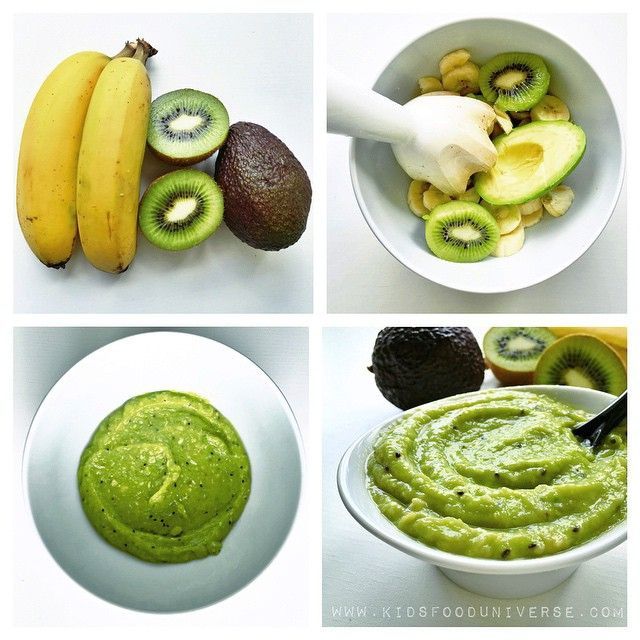 1 How to brew?4 Age restrictions and ...
1 How to brew?4 Age restrictions and ...
Avocado - useful properties and calorie content, use and preparation, benefits and harms
Dietary tables
Table No. 1: for ulcers and gastritis (5) Table No. 2: for gastritis, colitis and liver diseases (5) Table No. 3: for intestinal diseases (5)
PP recipes
PP breakfasts (74) PP lunch (56) PP dinner (74) PP desserts (75) Low glycemic meals (30)
Recipes for children
Recipes for children 2 -3 years old (428) Recipes for children from 3 years old (950) Recipes for children 1-2 years old (176)
By type of dish
Pastries and desserts (1913) Main dishes (1800) Appetizers (1048) Salads (747) )Cocktails (389)Soups (352)Breakfasts (344)Pasta (136)Marinades (76)Sandwiches (76)Pizza (58)Bouillons (2)
Ethnic cuisine
Russian (357) Italian (200) French (105) Georgian (67) American (65) European (52) Ukrainian (43) Japanese (39) English (31) Mexican (30) Spanish (24) Uzbek (22) Greek (19) Indian (19) Chinese (19) other cuisines
By time
3 to 10 minutes (1101) 10 to 25 minutes (2654) 25 minutes to 1 hour (3833) 1 to 2 hours (575) more than 2 hours (201) several days (14)
Preferences
Vegetarian dish (321) Lenten menu (488) Children's menu (215) Low calorie dish (135) In a slow cooker (33) Bread maker (11) Steamed (33)
For the holiday
Favorite recipes (161)Birthday (104)Valentine's Day (85)Shrovetide (118)Recipes for the New Year 2021 (308)Christmas (35)Picnic (27)Halloween (8)March 8 (56) ) Great Lent (225) Easter recipes (46)
Article
Selectedvoice navigator Project -user Agreement Polish Polish Policy
Come back
A
Avocado (Persea americana) 9000 9000
History and distribution
The avocado is native to the Caribbean, South and Central America, where it still grows wild. The Aztecs began to cultivate the avocado tree in the 3rd millennium BC. e. The name avocado comes from the Aztec ahuacatl, "forest oil". In English-speaking countries, avocados are called "alligator pear".
The Aztecs began to cultivate the avocado tree in the 3rd millennium BC. e. The name avocado comes from the Aztec ahuacatl, "forest oil". In English-speaking countries, avocados are called "alligator pear".
Today, avocados are grown throughout tropical and subtropical climates. This tree needs heat and humidity. The unrivaled leader in the cultivation of avocados is Mexico.
Photo by Stepan Babanin on Unsplash Source: unsplashDescription
The avocado is a large, pear-shaped berry. The weight of the avocado fruit varies from 100 g to 1 kg, the size is from 7 to 20 cm. One tree produces about 1200 fruits per year.
The peculiarity of avocados is that they ripen when taken from the tree. In addition to avocados, only bananas have this rare property.
Ingredients
The main feature of avocados is their high fat content - about 14%, of which most are monounsaturated. Avocados contain carbohydrates, proteins and a complex of B vitamins. Of the micro and macro elements, avocados contain calcium, potassium, magnesium, phosphorus, iron and zinc. Avocados are very low in fiber.
Of the micro and macro elements, avocados contain calcium, potassium, magnesium, phosphorus, iron and zinc. Avocados are very low in fiber.
Properties
Avocado effectively lowers the level of cholesterol in the blood, and due to its low energy value helps to get rid of excess weight.
Use
It is recommended to eat only ripe, soft fruits. The pulp of an avocado in the air quickly oxidizes and darkens. To prevent this, after peeling the avocado, sprinkle with lemon or lime juice.
Due to their high content of monounsaturated fats, avocados are a valuable product for vegetarians and healthy eaters. Avocado pulp can replace animal products in salads and sandwiches.
Avocado is used in all tropical cuisines. The famous Mexican dish guacamole is mashed avocado with salt, lime juice, coriander, garlic, tomatoes and spices. Guacamole is eaten on its own or served as a dip. In Venezuela, a similar sauce is prepared more spicy - chili peppers and vinegar are added to the pulp of an avocado, and in Sri Lanka a similar dish is prepared with milk and palm sugar.
In Indonesia, Vietnam, India, avocados are added to milkshakes, ice cream and other desserts.
In Ethiopia, avocado juice is part of a puff cocktail made from mango, banana, guava and papaya juices.
Chile version of Caesar salad and California rolls contain avocado chunks.
In modern world cuisine, avocados are used for making sandwiches, salads, omelettes, side dishes for meat. Avocado halves are stuffed with chicken, fish, seafood, vegetables and baked.
Attention! Avocado does not tolerate prolonged heat treatment - it becomes bitter.
Interesting Facts
The avocado tree can be grown as a houseplant in any climate, however, it will not bear fruit in the absence of sunlight.
The leaves and bark of the avocado tree are poisonous to cats, dogs and many other animals.
Avocado calories and nutritional value
Avocado calories - 160 kcal.
Avocado nutritional value: proteins - 2 g, fat - 14.